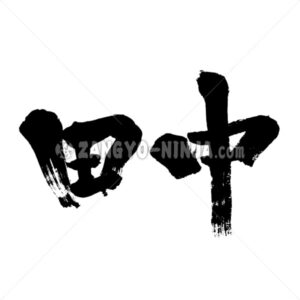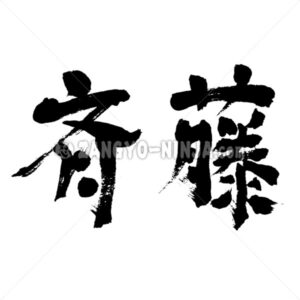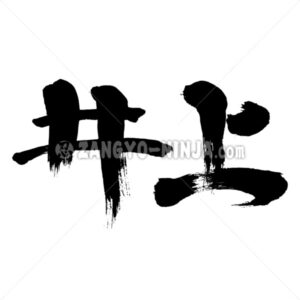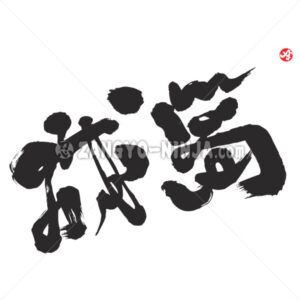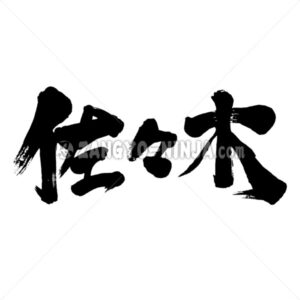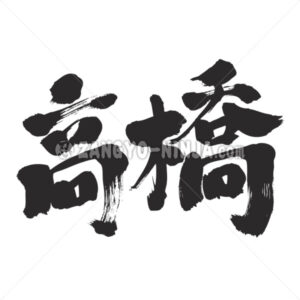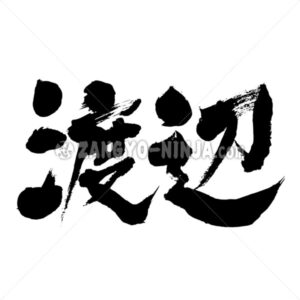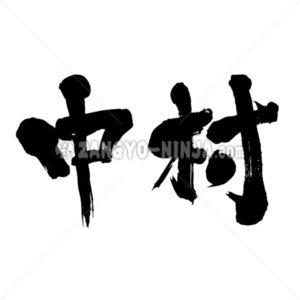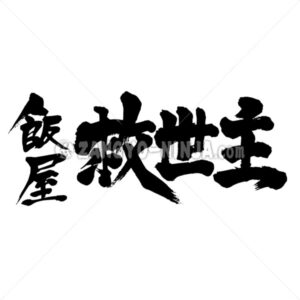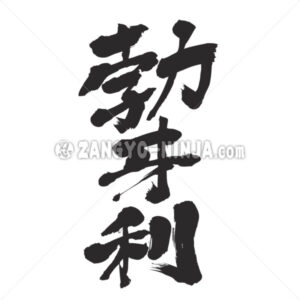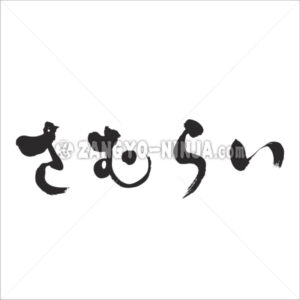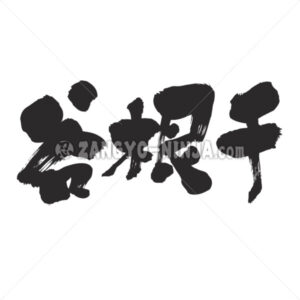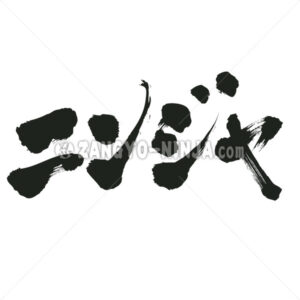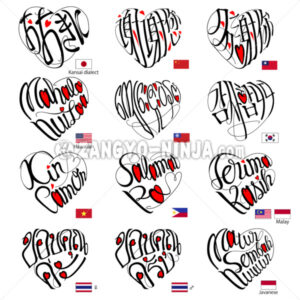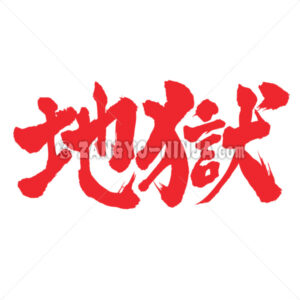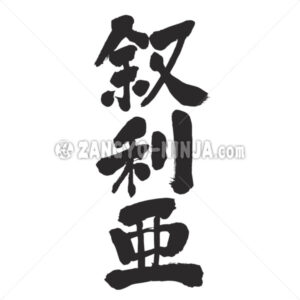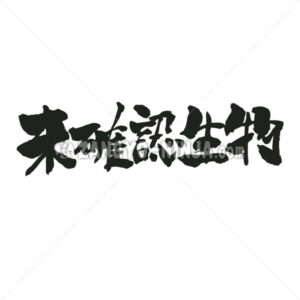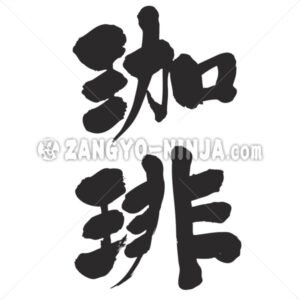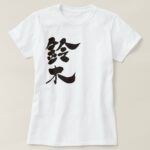Description for “SUZUKI in Kanji”
This line originated from Kii Province (Wakayama Prefecture), when the family of the Hozumi clan, who was a Shinto priest in Shingu City, Wakayama Prefecture, used the surname Suzuki.
The Suzuki family, which spread from the Tokai region to the Kanto and Tohoku regions, pronounces it as “Suzuki”, but the old Suzuki family in Wakayama and Mie prefectures still pronounce it “Susuki” without any ambiguity.
Etymology of the Suzuki family name
Matter. The name is said to have been given by the Hozumi clan in the Heian period (794-1185) from suzuki, meaning “piled rice ears” in the dialect of southern Wakayama and Mie prefectures (also known as Kumano). See Hozumi Hozumi. The Hozumi clan moved to the Chubu, Kanto, and Tohoku regions via Fujishiro, Kainan City, Wakayama Prefecture. Takemachi, Toyota City, Aichi Prefecture, was developed by the Suzuki clan from 1185 to 1190 (Bunji era), and is said to have been called “Sasaki Township. Iizawa Sentatsuzawa, Hago-cho, Ogatsu-gun, Akita Prefecture, is said to have been inhabited in 1189, Nishiuraenashi, Numazu City, Shizuoka Prefecture, from 1334 to 1338, and Shinohara-cho, Chuo-ku, Hamamatsu City, Shizuoka Prefecture, and Yonbonmatsu-cho, Chuo-ku, Hamamatsu City, Shizuoka Prefecture, during the Muromachi Period. In Ono Akanuma, Ono-cho, Tamura-gun, Fukushima Prefecture, there is a legend that he came from Shirahama-cho, Nishimuro-gun, Wakayama Prefecture. According to the legend, he came to Japan during the Heian period (794-1192). Hirai, Wakayama City, Wakayama Prefecture (formerly Suzuki Township) is a place name recorded in the Warring States Period. It is said that the Suzuki clan lived there. In Kitakuroda, Kawagi-cho, Tsu City, Mie Prefecture, there is a legend that the name was written “Suzuki” by a descendant of the Sasaki clan who came from Shiga Prefecture in 1575. See Sasaki Sasaki. In Shiohokubi-cho, Hakodate, Hokkaido, the surname is said to be a new Meiji surname based on the name of a Suzuki shop in the Edo period. This is an example of a place that is said to have been a pioneer in this field. According to tradition, the family has lived in the area since before the early Edo period. Kamikawabe, Kawabe-cho, Kamo-gun, Gifu Prefecture; Nishiyama, Kakegawa-shi, Shizuoka Prefecture; Itazawa, Kakegawa-shi, Shizuoka Prefecture; Shimojo, Fujinomiya-shi, Shizuoka Prefecture; Koizumi, Fujinomiya-shi, Shizuoka Prefecture; Shimokawairi, Atsugi, Kanagawa Prefecture; Shimoshima, Hiratsuka-shi, Kanagawa Prefecture; Ichinotsubo, Nakahara-ku, Kawasaki, Kanagawa Prefecture; Yabe-cho, Machida, Tokyo; Shimoyagiri, Matsudo-shi, Chiba Prefecture; Wakikawa, Sakae-cho, Inba-gun, Chiba Prefecture; Maki, Matsuo-cho, Yamatake-shi, Chiba Prefecture, Mangi, Isumi City, Chiba Prefecture; Masuda, Isumi City, Chiba Prefecture; Yamada, Yaita City, Tochigi Prefecture; Maiko, Minamiuonuma City, Niigata Prefecture; Namezu Okanouchi, Nakajima Village, Nishishirakawa County, Fukushima Prefecture; Oaza Hiragata Higashitamen, Minatomachi, Aizu Wakamatsu City, Fukushima Prefecture; Oaza Hajime Arakuda, Aizu Wakamatsu City, Fukushima Prefecture; Kodaira Minami, Yamamoto Town, Watari County, Miyagi Prefecture; Minaminagaya Nakahara, Iwanuma City, Miyagi Prefecture; Takahashi, Tagajo City, Miyagi Prefecture Kurikoma Numakurahata Gage, Kurihara City, Kurihara Prefecture. Zenrin. In Nayu, a small village in Muroto-Misaki Town, Muroto City, Kochi Prefecture, it is said that they are descended from the Suzuki clan, who were fallen members of the Heike clan who came to Japan at the end of the Heian period (794-1185). See Taira Taira. Zennin. In Wana, Yoshimi-cho, Hiki-gun, Saitama Prefecture, the Zennons are said to have lived there during the Muromachi period (1336-1573). Zenrin. In Arima-cho, Kumano City, Mie Prefecture, the family is said to be descended from a warrior of the Warring States Period.



